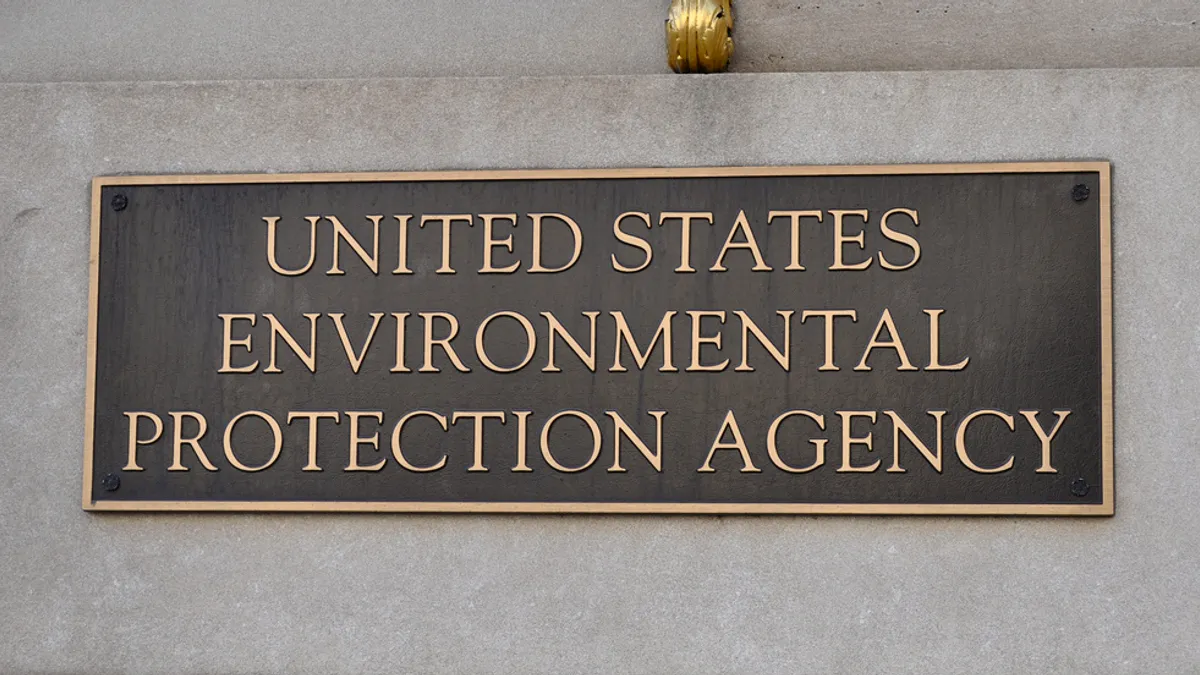Dive Brief:
- The Environmental Protection Agency and Department of Energy have completed agency reviews to reduce regulatory burden on industry that President Trump directed in an March executive order.
- The EPA review identified four rules for reform, including the New Source Review (NSR) and National Ambient Air Quality Standards (NAAQS). The agency also wants to restart the Smart Sectors initiative and take a closer look at the impact of regulation on employment.
- The Department of Energy's review and proposed changes will focus on ways to streamline natural gas exports, and will review national laboratory policies, National Environmental Policy Act (NEPA) regulations, and the agency's Appliance Standards Program.
Dive Insight:
The EPA has already moved to separately rescind the Clean Power Plan, which was also a part of President Trump's executive order earlier this year.
Now, separately, the EPA and DOE have identified several regulatory areas are ripe for changes, review or elimination.
Secretary Rick Perry said in a statement that the president will review the recommendations and then take actions "freeing the energy sector from unnecessary regulatory burdens.”
DOE's regulator review identified four areas for focus: ways to streamline natural gas exports; a review national laboratory policies; a review of NEPA regulations; and an assessment of the agency's Appliance Standards Program. EPA's review identified the NSR rules, NAAQS, employment issues and bringing back the Smart Sectors program.
The Smart Sectors partnership program aims to provides a platform for regulated sectors to collaborate and develop approaches to protect the environment and public health.
If all of the proposed changes and reviews are tough to keep up with, the U.S. Chamber of Commerce, along with law firm Beveridge & Diamond, have created a " comprehensive Energy Tracker" to follow developments.
“Given the rapid pace that the administration has been working over the past ten months, we believe there is a need for an objective clearinghouse of regulatory actions,” said Karen Harbert, president and CEO of the U.S. Chamber’s Global Energy Institute.
The tool is aimed at businesses, policymakers, stakeholders, and journalists. You can find the tracker here.
The Clean Power Plan, finalized in 2015, never went into effect. It was a prime target of the Trump adminsitration and in February last year the Supreme Court stayed the rule. The administration is now looking to replace the rule with less-stringent regulation, or could instead challenge the 2009 carbon endangerment finding, which requires EPA to regulate carbon as a public health threat.















